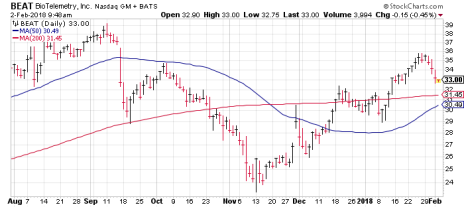… it was the age of wisdom, it was the age of foolishness, it was the epoch of belief, it was the epoch of incredulity, it was the season of Light, it was the season of Darkness, it was the spring of hope, it was the winter of despair, we had everything before us, we had nothing before us, we were all going direct to Heaven, we were all going direct the other way – in short, the period was so far like the present period, that some of its noisiest authorities insisted on its being received, for good or for evil, in the superlative degree of comparison only.
That, of course, is from the opening of A Tale of Two Cities, Charles Dickens’ masterpiece about the years leading up to the French Revolution.
[text_ad]
And it sounds a lot like our own time!
The stock market is booming—but only the rich are benefiting.
The economy is growing—but wages aren’t (much).
Unemployment is low—but only because many people have given up looking for work.
We carry computers in our pockets—but they distract us from the real world around us.
Uber and Lyft have thrilled customers—but taxi drivers are suffering.
The U.S. is now a net exporter of oil—but the coal industry is suffering.
The surveillance industry is booming—but privacy is disappearing.
Most people in the country have medical insurance—but we’re not any healthier.
And, perhaps worst of all, there’s a growing chasm in our country between those on the left and those on the right, both in political office and out.
As a result, insecurity rules.
Now, I’m not going to erase those insecurities today, but I have been thinking about one of the problems that has been mentioned a lot recently, the problem of robots taking over jobs previously done by humans.
Jobs Under Attack by Robots
Assembly Line Workers
Bus Drivers
Taxi Drivers
Truck Drivers
Telemarketers
Receptionists
Tax Preparers
Paralegals
Legal Assistants
Cashiers
Fast Food Cooks
Bank Tellers
Warehouse Workers
Pharmacy Technicians
Journalists
Pilots
Bartenders
Postal Workers
Soldiers
Guards
Travel Agents
Bomb Disposal Technicians
and
Nuclear Alert Warning Workers
The jobs above—and more—are among those that smart machines can learn to do better, faster and cheaper than humans. And it is good that machines will do them.
But what will the people do for work when those jobs disappear?
They Will Do New Jobs!
The template for this, of course, is the Industrial Revolution (though it wasn’t called that at the time). The Industrial Revolution ushered in huge advances in productivity, leading to increased standards of living and, ultimately, a whole new class of jobs that didn’t exist before—like elevator operators, cashiers, taxi drivers and locomotive engineers—as well as technicians to repair all those new machines.
It also was hugely disruptive to society. While there were winners among those who embraced and invested in change, there were losers in those who couldn’t or wouldn’t change.
I’m not preaching, just reciting the facts.
So what will those new jobs be?
Jobs That Will Be Created
The fact is, it’s hard to know. It’s easy to look back, but it’s hard to look forward. My guesses are that high-level software developers will remain in demand; the robots will need intelligent guidance. But I also foresee continued growth in occupations that make life better for other people, like nurses and home health aides.
And the Department of Labor agrees. It projects 47% growth in the number of home health aides over the next decade and 39% growth in the number of personal care aides. Also big: medical assistants, market research analysts and financial managers.
One Stock to Buy
So, if you want to invest for this future, what’s a good stock to invest in? I suggest a company that will almost certainly be supplying one of the tools those home health aides are using!
The company is BioTelemetry (BEAT). Its expertise is designing and making cardiac monitoring systems that are already used by more than half a million patients a year.
It recently bought out its largest competitor.
Revenues and earnings are both expected to grow about 35% in 2018.
And, most excitedly, the company’s technology is now accessible via the Apple Watch, raising the prospect that pretty much everyone will eventually be able to benefit from cardiac monitoring technology—and, in the process, investors in the company will get rich!
But Should You Buy Here?
BEAT climbed from 24 to 36 over the past two months before beginning the current correction. How far this correction goes, time will tell. You could simply buy here—or you could wait and try to get in after the bottom has passed.
But what I really suggest is that you become a regular reader of my Cabot Stock of the Week, which holds the stock in its portfolio. Once you do, I’ll send you weekly updates on BioTelemetry and all the other stocks in my portfolio—which, incidentally, was up 49.5% last year.
Click here to join.
[author_ad]


